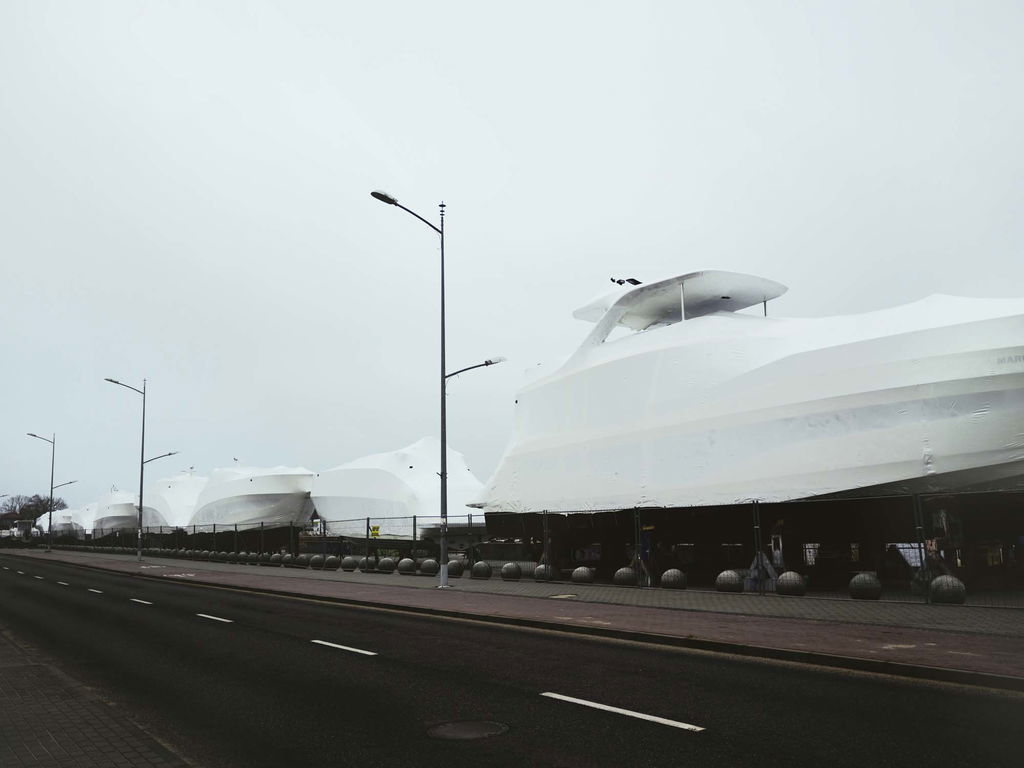
The decision to work with a large format digital camera had been maturing in me for some time.

As a documentary photographer, I had been working with a small format analog camera and a digital X-Pro3 for years on a long-term photographic project on the Polish coast. But the allure of large format, its promise of unparalleled detail and depth, finally became irresistible with the lightweight, compact GFX100RF equipped with 35mm lens, which from first contact seemed almost tailor-made for the kind of storytelling I cherished.my way of working on visual storytelling. I decided to take it to a place I had visited countless times, yet one I was now ready to see with fresh eyes.

For years, I had spent my summer holidays with my camera amidst the hustle and bustle of coastal towns, capturing the poetry of everyday life during the tourist season. From crowded beaches to lively cafes and sun-kissed families enjoying their ice cream cones, my lens sought to document the vibrancy of these fleeting moments and how tourism reshaped the local landscape. But this winter trip with the GFX100RF was different. The crowds had long since returned home, leaving behind a melancholic yet serene emptiness. Now, I could focus on the quiet beauty of the landscape, the interplay of waves and sand, and the vast, open spaces that seemed to stretch infinitely.

From the start, the camera felt like an extension of myself. Its compact size and light weight (for a large format) allowed me to carry it effortlessly as I strolled along the deserted beaches of the Hel Peninsula, and to conveniently tuck it under my jacket as I fled a sudden snowstorm. The physical comfort of holding the camera was matched by its functionality. Shortcut buttons fell naturally under my fingers, and I could swiftly adjust exposure settings without losing focus on the scene before me. The rotating dial for changing frame formats was a delight to use; switching between 3:4, 3:2, panoramic, and square formats was smooth and allowed me to experiment with compositions in ways I hadn’t anticipated.

One of the most rewarding aspects of this journey was how the GFX100RF allowed me to slow down and immerse myself in the reality I was photographing, giving me time to contemplate the structure of each frame with deliberate care. Large format opened up new possibilities for me, capturing more of the story within a single shot
and encouraged me to explore the relationships between elements in the frame – the gentle curve of sea meeting sky, the play of light on rippling water, the stark geometry of the interior of a closed-in bar on a campground.

Working with a fixed lens felt liberating, rather than restrictive. I didn’t have to second-guess whether a different focal length would be better for a given shot. Of course, I could always use the digital zoom, but the fixed lens encouraged me to move closer or step back, to physically engage with my subject. The lack of lens options wasn’t a limitation; it was a gift that allowed me to focus entirely on the composition. And the results were stunning.
The GFX100RF captured every nuance of texture and light with remarkable clarity, delivering images that felt as expansive and intimate as the scenes themselves.

Walking through abandoned fishing villages and towns, I was drawn to quiet details that the chaos of summer often obscured: tiny fruits on leafless bushes, lost children’s toys, swans resting on the beach, a ribbon fluttering in the wind. The GFX100RF’s stealth was a boon to me. The camera’s unobtrusiveness, its quiet shutter and classic design allowed me to work without drawing attention to myself, even when I encountered the occasional passerby. I felt less like a professional photographer and more like an observer, quietly recording the interplay of light and space.

The GFX100RF has a very convenient viewfinder, which I used more often than the LCD screen to verify the shot frame, and which allowed me to better block out outside world distractions and immerse myself in the frame I was checking, which increased my sense of connection with the camera, deepened my involvement in the scene I was photographing, and heightened my awareness of the subtle play of elements in the frame.

I very quickly felt comfortable and satisfied with using this large format camera. My initial concerns about transitioning from a small-frame system melted away. The camera’s compact and elegant design and functionality made it a pleasure to use, and its exceptional image quality exceeded my expectations. With its one-million-pixel sensor, I felt secure in the knowledge that I had room to refine and reframe in post production.
But I rarely felt the need as the images I captured in-camera already carried the composition, clarity and precision I sought as well as the stories I was looking for, with the winter coastline providing a stark contrast to the vibrant summer scenes I had documented in previous years. It was as if the landscape had undergone an emotional reset,swapping the lushness of summer for a contemplative state of stillness. The vast, empty beaches and windswept dunes felt cleansing, both visually and emotionally. With the new GFX100RF in hand, I could embrace this solitude and translate it into images.

By the end of the trip, the GFX100RF had proven to be not only a great tool, but also my companion and friend, its functionality enhancing my ability to see and capture the world around me. Our winter journey together to the Polish coast was the beginning of a new chapter in a long-term project and was a very rewarding experience, in which the camera and I worked in harmony.

















































